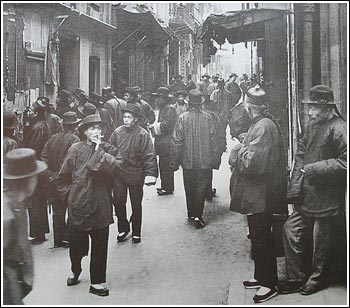Main Content
Lesson 1: Introduction to Race and Crime
Brief Historical Overview of Race and Crime in America
When most people think of questions related to race and crime, citizens often think of racial and ethnic minorities. One Gallup poll from the 1990s noted that half the respondents felt Blacks were prone to violence. The irony here is that most people don’t think in terms of the way race and crime has evolved in America. As pointed out in the Race and Crime text, over the last four hundred years, each racial and ethnic group has committed their share of crimes. From the genocide perpetrated against Native Americans, to the succession of White ethnic groups who successively viewed the next immigrant group as the crime problem. While the Race and Crime text clearly lays out the foundations of how race and crime has intersected in the lives of most groups that have been in America, there is a general pattern of how crime disparities materialize.

Step 1: An established racial and ethnic group takes notice of large numbers of immigrants moving to their areas.
Step 2: The new immigrant group is despised by the dominant group and is stereotyped using negative terms that label the immigrant group deviant.
Step 3: The new immigrant group struggles to survive and is often forced to engage in various criminal activities that typically culminate in organized crime and or gang formation.
Step 4: After a generation of struggle, the formerly new immigrant group assimilates to American life, and moves away from criminal activity and into more traditional ways of life.
Step 5: The next immigrant group moves in and the process begins all over again

There are clear exceptions to this process.
First, Native Americans were already here when Whites came and colonized them. Thus, given their unique cultural traditions, it was extremely hard for them to fully assimilate.
Second, unlike White immigrants who came here looking for opportunities, Africans were brought to America forcibly.
In addition, even after they were emancipated two centuries after becoming the primary labor force in the South, their search for prosperity was hampered by racism. It has been well-established that, over time, skin color prevented them from assimilating into the mainstream of American life. For Asian American, they also followed the same steps, but after being restricted to Chinatowns, they forged their success through a heavy emphasis on education.

